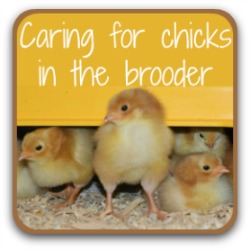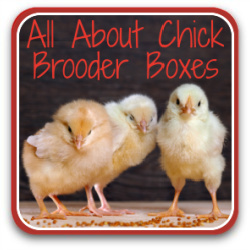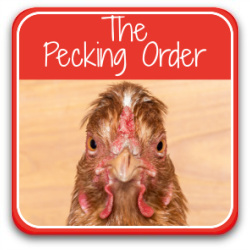- Home
- Chicks in the Brooder
- Combining flocks
Introducing new chicks to chickens: when is it safe and how can it be managed?
Knowing when to introduce new chicks to chickens in an existing flock can be disastrous. In this video session of "Cath's Chicken Chat" I look at how to know when it's the right time, what feathering has to do with it, how to get the chicks ready using the "halfway house" method, how to prepare your coop and when and how to finally add the chicks in with the big girls.
If you'd prefer to read the information, there's a full transcript of the video here.
To see the captions, click the "CC" icon, bottom right.
To jump to a particular point in the video, click the "hamburger" icon.

A note about how to introduce new adult chickens.
This method of introducing chicks works for adding any new chickens to the flock.
New adults which are coming from a different source such as a breeder, a poultry show or a hatchery should always be kept separately for at least two weeks, to make sure they are free from disease.
I have a separate article about how to isolate sick chickens completely, here.

Transcript of video session: introducing new chicks to chickens.
When to put chicks outside – feathering.
 Pin Me!
Pin Me!So your baby chicks are growing up.
If you've had them in your house there will come a time when you feel that it's time for them to go outdoors – but when's the right time? When is it safe for them?
There are two things that you need to consider: firstly, we need to look at feathering; secondly we need to look at where exactly they are going to go, and we need to plan for that.
Let's start by looking at the feathering.
Chicks are hatched with that cute fluffy down that we all know and love. But that cute fluffy down does nothing at all to keep them warm, or to help them when it's hot to cool down.
For that reason, you need to wait until your chicks have feathers.
How long does that take?
It depends on the breed. I've had feathers starting to come in at about seven or eight days old, and others that haven't started before two or three weeks.
The first feathers are likely to be the wings, and the chicks will start to use these to learn to fly. It's at that point that you may well start thinking it's really time for these chicks to go outside!
But you need to wait until the chick is almost completely covered with feathers. It's that which will help them deal with the elements, whether that's the heat or the cold.
How old will they be when that happens?
Again, it very much depends on the breed. By and large my chicks don't go outside until they're about 12 weeks old, which might seem a long time.
But better that than have your chicks perish from the cold, or indeed from the heat.

Before introducing new chicks to chickens in the coop.
It can be a good idea to let your chicks have a taste of the great outdoors before they actually go into the big chicken run itself. For a detailed description of why and how, see my article about when baby chicks can go outside for the first time.
I do this with all my chicks so as soon as they're about six or seven weeks old. I take them outside carrying them in a box to make sure they don't escape, and put them inside some chicken netting, making sure there's also food and water in there.
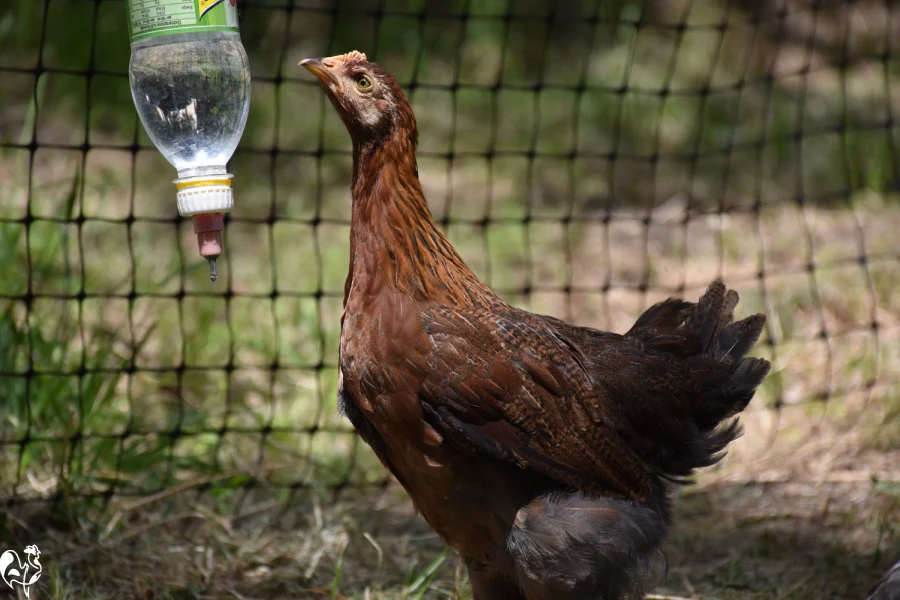 Remember to put water in the temporary mobile run.
Remember to put water in the temporary mobile run.This allows them to get a taste of what it's like to be outside. They will be quite scared at first, because they have to deal with sights and sounds they've never seen or heard before.
They will try to escape, because chicks are very curious. It's imperative that you stay with them for all the time they're out there. Even if you go inside for just a few minutes, there will be a predator waiting and chicks make an easy lunch for a lot of different predators.
I use this Omlet mobile fence for this purpose.

Introducing new chicks to chickens: planning the coop.
So the time's come that your chicks need to go in with the big girls. How do you do that?
It's really important that this is managed properly because adult chickens, as you will know, have a pecking order.
The pecking order can mean that even adult chickens are bullied – and bullied severely. If you put chicks into the run with big girls without planning and preparation, it's highly likely that they will actually be killed.
Which sounds awful! But chickens, delightful as they are, can be real bullies.
How do you prepare then?
It's quite easy if you've got a large chicken coop – a walk in coop or run, for example. All you need to do is arrange some chicken wire to fence off part of the coop.
The idea is that the chicks should be seen and heard by the rest of the flock, and should be able to see and hear the rest of the flock in return, so they get used to each other. They can see, hear and smell each other, but they can't actually touch – and that's the important bit.
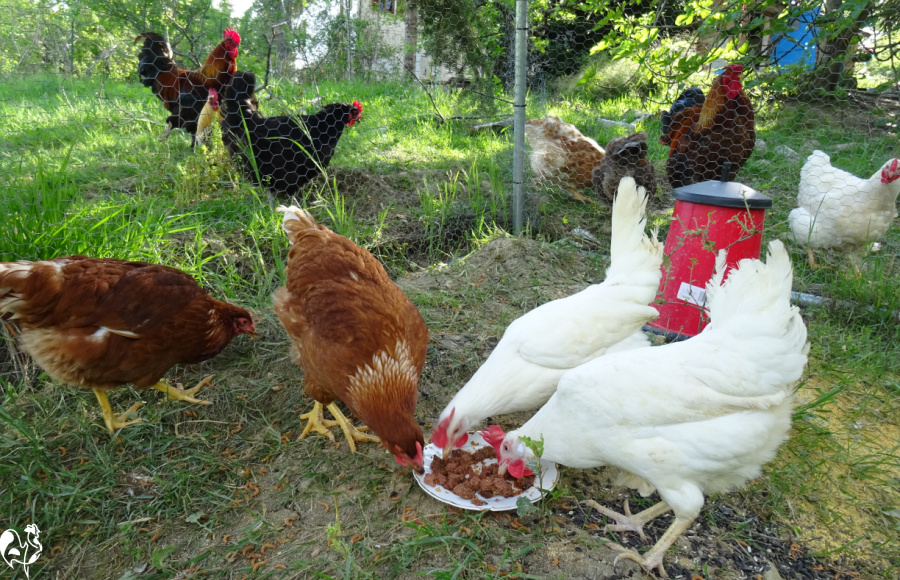 My established flock (outside the run)can see and hear, but not touch, the new girls.
My established flock (outside the run)can see and hear, but not touch, the new girls.Could your new chicks (or chickens) go into a completely separate coop?
If you have a big enough run, it's a good idea to get a completely separate coop for the chicks when they first go outside.
I have two: one is a the smaller Eglu, which I use if I'm introducing six or seven baby chicks to the established chickens.
The second is an inexpensive wooden chicken house which I place inside a chicken wire run which is in turn inside my big run, so they're doubly protected.
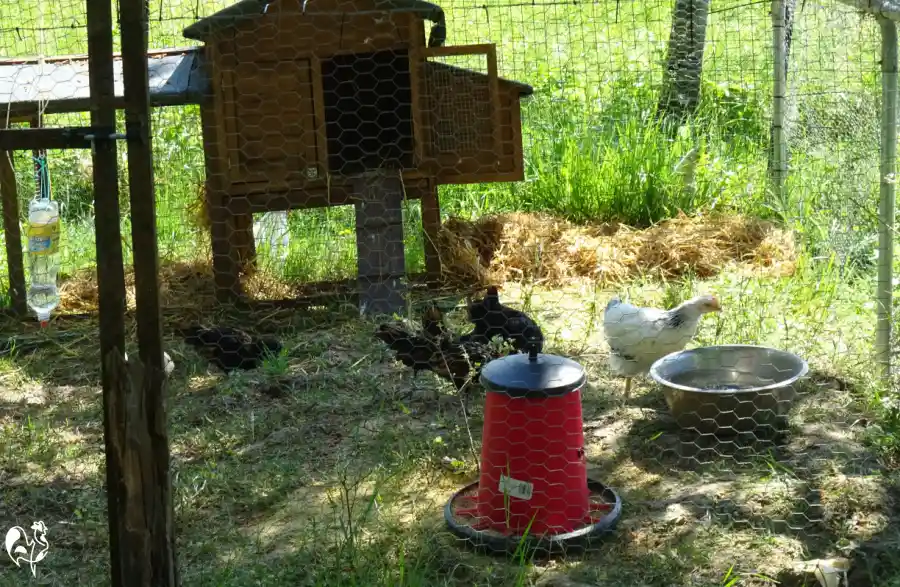 My small wooden coop set in a run within a run keeps new chickens safe.
My small wooden coop set in a run within a run keeps new chickens safe.I'm very lucky to have that scope, and not many people do. You just need to find some way of keeping the adult chickens away from your baby chicks, and you need to plan this well in advance.
While your chicks are in the brooder, start planning! Don't leave it until the day before you think the chicks need to go out.

When to introduce new chicks to chickens? – size matters!
When's the right time to mix the two flocks together?
This will depend almost entirely on the size of your chicks. It would be a huge mistake to put tiny baby chicks in with the big flock, because they will simply be pecked.
And if they're not killed, they'll be very seriously injured. So don't do it – wait till your chicks are almost as big as the big girls before you mix the two flocks together.
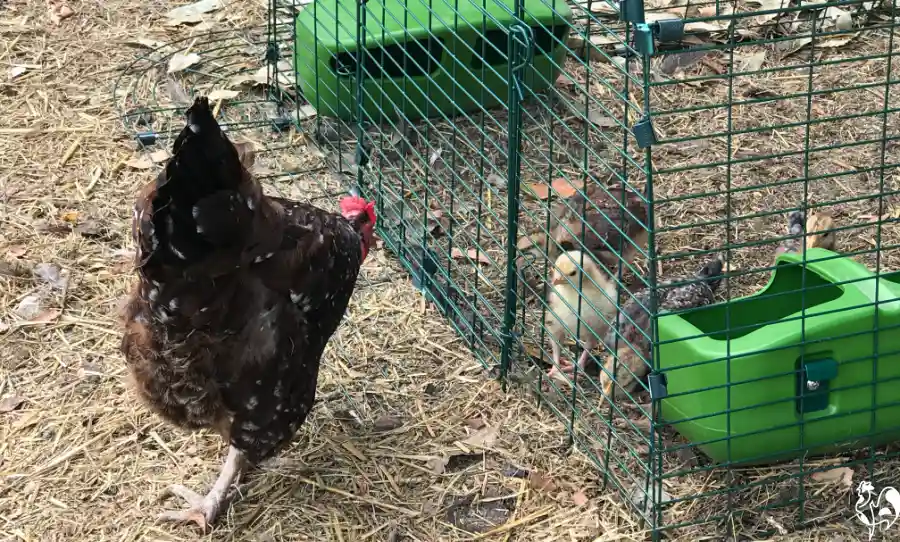 These baby chicks are protected from my large hens by my Eglu run.
These baby chicks are protected from my large hens by my Eglu run.Which brings us to the next question: how do we mix the two flocks?
Introducing new chickens at night.
It's pretty straightforward really...
The way I do it is to wait until everybody's roosted. When the adults are roosted, they'll be pretty sleepy. Also, it will be dark, or at least dusk, outside – and chickens really can't see well in the dark.
So one by one, simply lift your chicks on to the roost, in between the big girls (and boys).
You're likely to find (I have found this in all the chicks I've ever mixed in with the big girls) that there won't be any trouble at night.
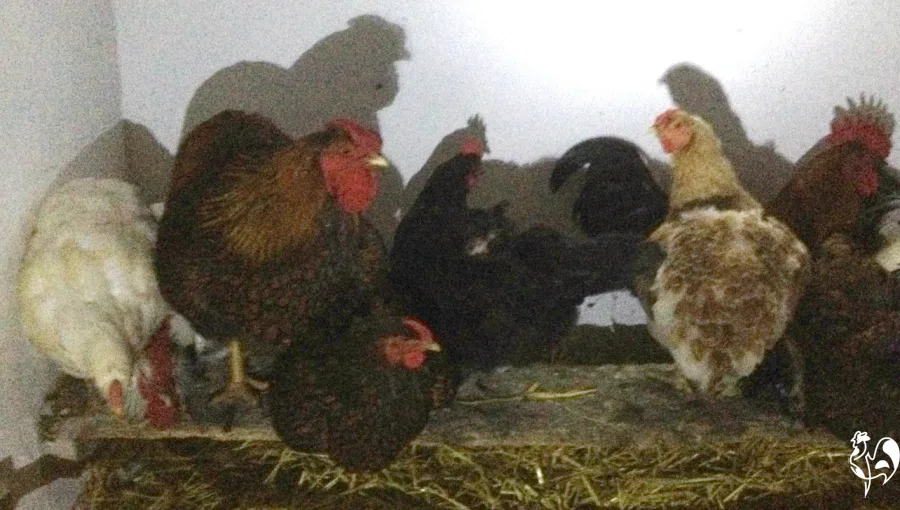
And by the morning, somehow everybody just seems to be used to each other! So they get down from the roost and they will start going about their daily business as they always would.
You'll probably find that your baby chicks tend to stick together for a while. That's only natural: they know each other, they've grown up with each other, they trust each other and they will look out for each other.
Will there be any pecking?
There may well be – the pecking order has to be re-established when new chicks or chickens are introduced to your flock. Keep an eye on it to make sure it doesn't carry on for an extended time, or create injury, or prevent anyone from eating or drinking.
But otherwise, just enjoy your combined flock!

If you found this information helpful, these may also interest you.

Sources.
The information I provide in this article and others is based not just on my own experience, but on evidenced facts from scientific, peer-reviewed research and books.
Some of the trusted sources I have used in this article are these.
British Hen Welfare Trust: 5 Tips to Successfully Merge Chicken Flocks. Pub. BHWT, 2022.
Damerow, Gail: Hatching and Brooding Your Own Chicks. Pub. Storey, 2013.
- Home
- Chicks in the Brooder
- Combining flocks
